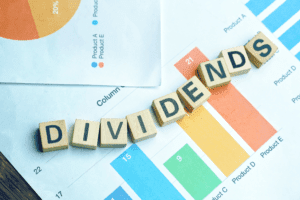
The bigger your capital investment or current cash, the lower your burn rate—even if operating expenses stay the same. If your business is off to a good start but isn’t turning a profit, what is the formula for determining burn rate you may be able to attract investors looking for high-growth opportunities. Selling shares will give you cash to work with and more time to try new strategies to increase revenue.

For established companies, one option is to reduce or eliminate dividends. Businesses can increase sales by running promotions or offering discounts to spur purchases. A startup without market-ready products may begin selling consulting services or soliciting pre-payment for later delivery of finished goods, among other techniques. Companies can also raise cash by selling assets such as vehicles, equipment or real estate.
Sommaire
Divide Expenses by Runway
By closely monitoring expenses and focusing on revenue generation, businesses can effectively manage their burn rate and ensure sustained growth and success. No matter the maturity of your startup, you need to have a solid grasp on burn rate as a concept. It’s a vital component that will guide how you spend, how you forecast, when you opt to turn to investors, and how you make strategic decisions for your business. They’re investing to accelerate your growth —not to give you a big pile of cash you never touch. So when you secure a capital infusion, you shouldn’t be reluctant to increase your burn rate.
It’s all about cutting costs (and preferably increasing revenue at the same time), which should specifically target discretionary spending first. Our smart corporate credit cards allow businesses to give each of their employees their own fully functional payment card that’s linked to the company. There’s no need to worry about reimbursements, because each card can be set up with custom budget controls and monitored directly via the Moss app. You’ll be able to reduce your burn rate with tighter control over discretionary spending, and more detailed insights into where your money is actually being spent. Secondly, cash burn rate is one of the primary metrics that investors look at when assessing how investable a business is, and how well it’s progressing towards profitability.
Is low burn rate always a good thing?
Suppose we’re tasked with measuring the burn rate and implied runway of an early-stage start-up, with $500k in existing cash on hand and $10 million in funding raised from venture capital (VC) firms. In contrast, the net burn rate formula is equal to the difference between the total monthly cash sales and total monthly cash expense of a startup. Project burn rate can be calculated by dividing the total cost of a project by the total amount of time in months it takes to complete. This helps project managers estimate the monthly project budget and track the overall progress and expenses of the project. Another consequence of a mismanaged burn rate is that a company may find itself unprofitable for an extended period of time.
Burn rate indicates how quickly your company is using or “burning” your start-up capital before it starts generating a positive cash flow. In other words, it’s a measure of how long your business can operate until it has to seek more capital. Burn rate is calculated by comparing your cash balance at the start versus the end of the period and then dividing that difference by the number of months. Calculating the burn rate in Excel requires the use of specific formulas to accurately determine the rate at which a company is depleting its cash reserves. By utilizing these formulas, businesses can gain valuable insight into their financial health and make informed decisions about their spending and investment strategies. A practical example of burn rate is how quickly your business spends cash reserves to cover overhead costs.
Gross Burn Rate Calculation for Startups
A mismanaged burn rate can lead to several undesired consequences for a company. As a company spends more money than it earns, it may resort to borrowing in order to sustain its operations. This can result in a significant debt burden that can negatively impact the company’s financial health and its ability to secure future funding. A high burn rate can significantly impact a company’s financial health and future prospects. Investors often examine a company’s burn rate to assess its ability to sustain operations and generate revenue.
Articles similaires
- Burn Rate: What Is It and How to Calculate It
- Accounting Rate of Return ARR Definition and Formula
- Accounts Payable Turnover Ratio Analysis Formula Example
- What Is Accounting? Definition and Basics, Explained
- Chart Of Accounts: Definition, Types And How it Works

